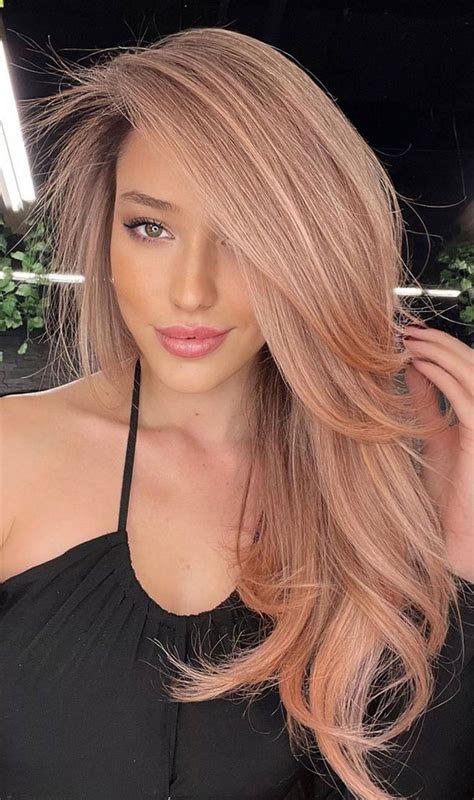Table of Contents
- Introduction
- Blonde Hair Evolution
- Blonde Hair Science
- Popular Blonde Hair Styles
- Hair Care for Blonde Hair
- Benefits and Drawbacks of Bleaching
- FAQs
- Conclusion
Introduction
Blonde hair has captivated hearts and imaginations for centuries, holding a place of beauty and allure in various cultures worldwide. From golden goddesses in ancient mythology to contemporary fashion icons, blonde hair has evolved into a versatile symbol of femininity, sophistication, and individuality.

Blonde Hair Evolution
30,000 Years Ago: Blonde hair first emerged in the early human population, with individuals carrying the MC1R gene variant (rs1805007) that caused fair hair and skin.
Ancient Egypt (2000-1000 B.C.): Egyptians associated blonde hair with fertility and the sun god, Ra. Women used henna to lighten their hair, while Cleopatra is believed to have used a mixture of vinegar and honey.
Medieval Europe (500-1500 A.D.): In the Middle Ages, European nobles and royalty prized blonde hair as a sign of beauty and purity. Women used lemon juice and chamomile to bleach their hair.
Victorian Era (1837-1901): The Victorian era witnessed a surge in the popularity of blonde hair, fueled by the romanticism of literature and art. Women began using hydrogen peroxide to lighten their hair.
Blonde Hair Science
Natural Blonde Hair: Natural blonde hair occurs when the hair follicle lacks the pigment melanin, which gives hair its dark color. Blonde hair contains higher levels of pheomelanin, a pigment that produces yellow or orange tones.
Bleach and Hair Lightening: Hair lightening agents, such as bleach and hydrogen peroxide, break down melanin pigments, allowing the hair to absorb lighter dyes. However, over-bleaching can damage the hair.
Highlighting and Balayage: Techniques like highlighting and balayage can create streaks or subtle gradations of lighter tones in blonde hair, adding dimension and interest.
Popular Blonde Hair Styles
Platinum Blonde: This icy, white-blonde hue is a bold and eye-catching statement.
Golden Blonde: A warm, honey-colored blonde that flatters a wide range of skin tones.
Honey Blonde: A warm, amber-hued blonde that evokes a natural sun-kissed look.
Strawberry Blonde: A unique blend of blonde and reddish tones that creates a soft, peachy effect.
Ash Blonde: A cool, gray-tinged blonde that neutralizes yellow undertones and adds sophistication.
Beige Blonde: A subtle, neutral blonde with a touch of warmth that complements fair and olive skin tones.
Hair Care for Blonde Hair
Moisturizing: Blonde hair tends to be drier due to bleaching, so regular conditioning is essential.
UV Protection: Blonde hair is more susceptible to sun damage, so use products with UV filters.
Protein Treatments: Protein treatments can strengthen and repair damaged blonde hair.
Purple Shampoo: Purple shampoo neutralizes brassy yellow tones and keeps blonde hair looking bright.
Toning: Toning can adjust the undertones of blonde hair and prevent them from becoming too warm or cool.
Benefits and Drawbacks of Bleaching
Benefits:
* Can enhance facial features and make you appear younger.
* Can create a variety of blonde hair styles and shades.
* Can conceal gray hairs.
Drawbacks:
* Can damage the hair and make it more susceptible to breakage.
* Can alter the natural hair texture, making it drier and coarser.
* Requires frequent maintenance and can be expensive.
FAQs
1. How often should I bleach my hair?
A: Depends on hair condition and desired look, but generally every 4-6 weeks.
2. Can I bleach my hair at home?
A: Yes, but it’s recommended to consult a professional for optimal results.
3. How can I prevent my blonde hair from becoming brassy?
A: Use purple shampoo, avoid over-washing, and protect from UV exposure.
4. What are Olaplex products?
A: Hair repair treatments that minimize damage during and after bleaching.
5. Can blonde hair be dyed back to its natural color?
A: Yes, but it requires multiple treatments and may leave some residual blonde tones.
6. Is blonde hair more expensive to maintain?
A: Yes, due to frequent bleaching, conditioning, and color treatments.
Conclusion
Blonde hair remains a captivating phenomenon that continues to inspire and empower women worldwide. From its historical roots to modern fashion trends, blonde hair represents a spectrum of beauty, individuality, and allure. With proper care and attention to detail, blonde hair can enhance your natural features, boost your confidence, and make a lasting statement.
